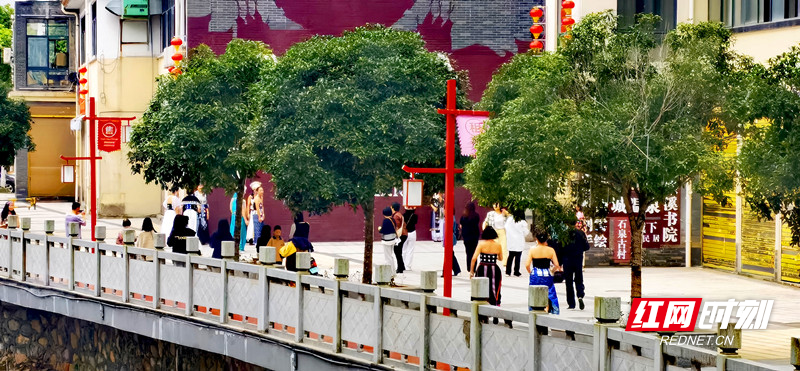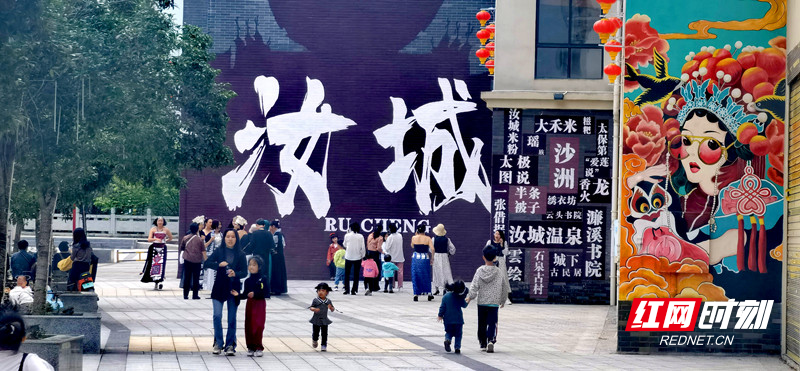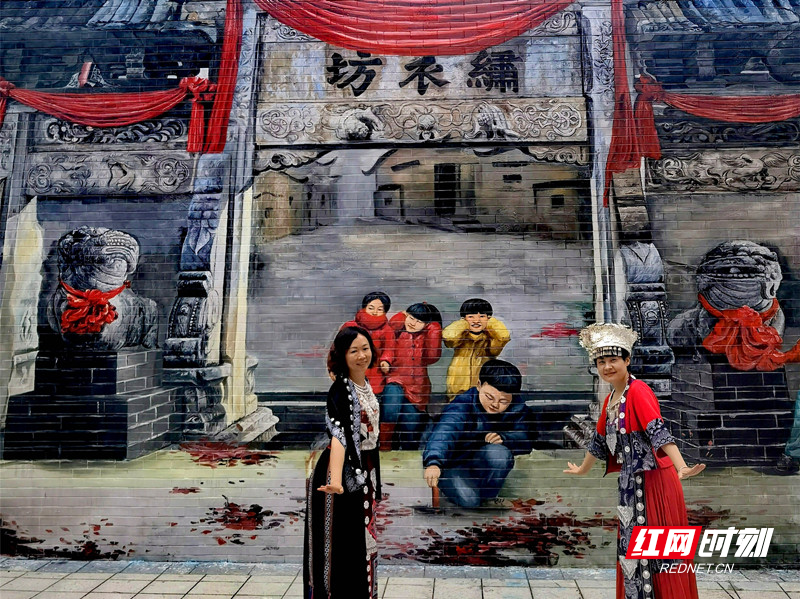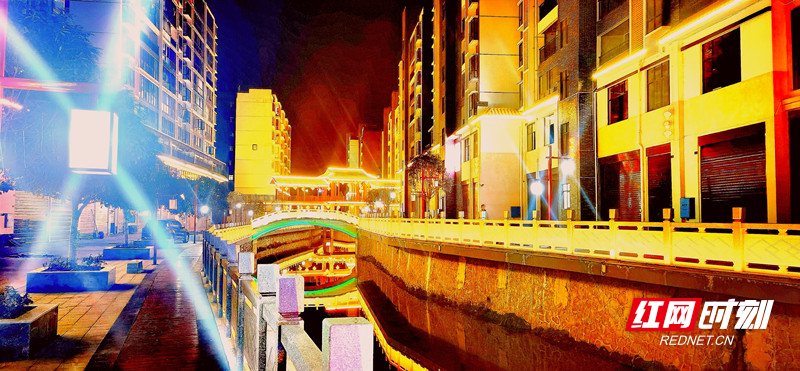Rucheng Ethnic Cultural Street lights up urban life
2023-06-08
The Rucheng Ethnic Cultural Street, located at the border between Hunan and Jiangxi Provinces, attracted numerous tourists on June 5.
Tourists are attracted by various shops selling agricultural specialties, snacks, accessories, and especially the local ethnic culture. The giant murals are vivid depicting the hand-made tour map of Rucheng County, the birthplace of Xiangnan Uprising, Xiuyi Monument, the hometown of hot springs in China, showcasing the local unique cultural and tourism resources. Besides, the exquisite hand-drawn paintings reflecting the local intangible cultural heritage are eye-catching, like incense dragon and ciba making. Meanwhile, a number of lively fiberglass sculptures also add a lot of fun.

In order to improve the sense of gain for tourists, the walls on both sides of the street have been painted with various local landmarks and unique elements. What’s more, a famous article titled “Ode to the Lotus Flower” has been painted on the manhole covers on the ground with a word on a cover. The word “Rucheng” in the center of the street also draws tourists to take photos.
Rucheng County is located at the junction of Hunan, Guangdong and Jiangxi, and the “Red Triangle” center of Chenzhou, Shaoguan and Ganzhou, where there are three ethnic townships and 44 ethnic minority villages. The population of ethnic minorities reaches more than 70,000, accounting for 17% of the total population of the county.
However, the county just focused on the construction of featured villages, folk customs show teams and ethnic culture exhibition rooms without a one-stop centralized and panoramic display of the ethnic culture, and failed to create a suitable high-quality economic form that fits in with the ethnic resources.

Last October, the county started to renovate the original Quanshuihe Commercial Street into an ethnic cultural street combining travel, shopping, entertainment and experience with an area of over 30 mu (20,000 square meters) and a construction area of 25,000 square meters. The investment totaled 260 million yuan. It was initially completed and put into operation in May this year. At present, the Dongquan River flows through amidst the well-arranged buildings, and over 130 stores stand along the 800-meter-long walkway. Neo-Confucianism Culture, Red culture and ethnic cultural and tourism products are integrated together in the street.

Lu Daofu, a manager of the project, introduced that the Rucheng Ethnic Cultural Street can promote ethnic culture, and help the urban development.
The Jinli Folk Clothing store, situated in the middle of the street, is opened by a college student about to graduate. She earned more than 20,000 yuan within over a month through the rental and sales of folk costume. Across the street is an oyster stall, whose owner believed that the street could also promote the night economy.
Dozens of stores have opened in the street within over a month. Now, public toilets and other ancillary facilities, as well as the dam are under construction.

“After the dam is built up, there will be wonderful ethnic cultural performances every weekend night.” Lu said that when the street is fully completed, shops will be opened for business with their owners dressed in ethnic costumes, performances of folk dance and musical instruments will be regularly given, and various ethnic cultural activities will be held, such as long-drum dance, bamboo dance, bonfire parties, to build a bridge between tourists and business owners.
The cultural and tourism attractions like Ailian Square and Long March Cultural Heritage Hall are very close to the street. Lu added that the street will be built into an Internet famous tourist attraction and a highlight of the county tourism.
At night, the street is brightly lit by colorful lights, and visitors in groups of three or five enjoy the folk customs and tasty food to have a relaxed time.




